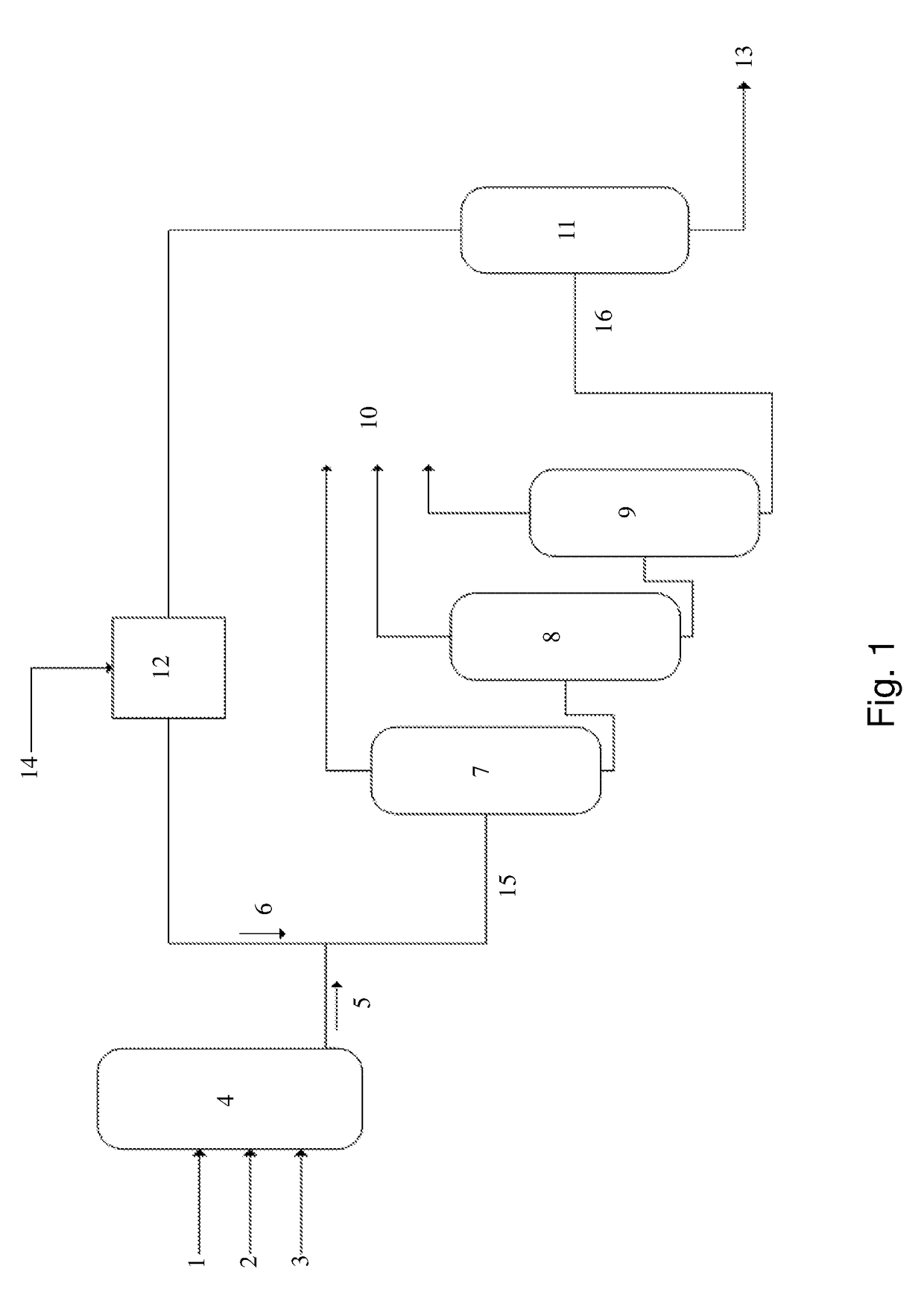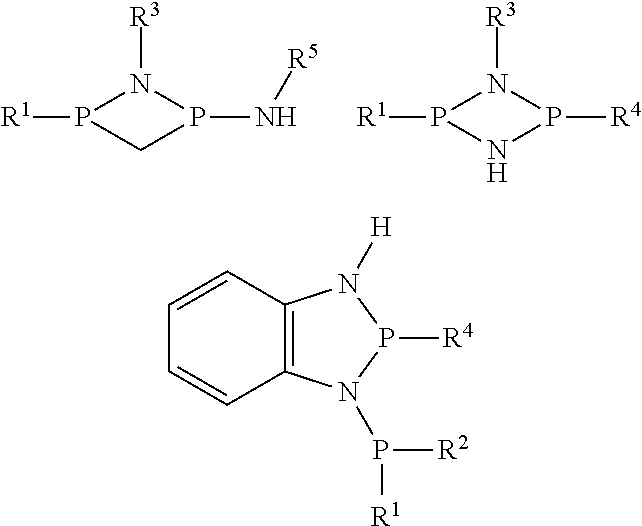Process for deactivation of an olefin oligomerization catalyst
a technology of oligomerization catalyst and deactivation process, which is applied in the direction of physical/chemical process catalyst, organic compound/hydride/coordination complex catalyst, hydrocarbon preparation catalyst, etc., can solve the problems of deactivation process, hydrochloric acid, formation of organic chlorides and alkylated toluene byproducts
- Summary
- Abstract
- Description
- Claims
- Application Information
AI Technical Summary
Benefits of technology
Problems solved by technology
Method used
Image
Examples
embodiment 1
[0037]A process for deactivation of an olefin oligomerization catalyst, the process comprising: contacting a catalyst composition with a catalyst quenching medium comprising an alcohol having at least 6 carbon atoms, an organic amine, an amino alcohol, or a combination comprising at least one of the foregoing, to form a deactivated catalyst composition, wherein the catalyst quenching medium is present in a molar ratio of catalyst quenching medium to catalyst of at least 3:1, preferably at least 5:1, more preferably at least 100:1; and recovering excess catalyst quenching medium.
embodiment 2
[0038]The process of Embodiment 1, further comprising recycling the recovered catalyst quenching medium.
embodiment 3
[0039]The process of Embodiment 1 or Embodiment 2, wherein the catalyst composition comprises a chromium source, a heteroatomic multidentate ligand, an activator, and optionally, a modifier.
PUM
| Property | Measurement | Unit |
|---|---|---|
| Operating pressures | aaaaa | aaaaa |
| temperatures | aaaaa | aaaaa |
| temperatures | aaaaa | aaaaa |
Abstract
Description
Claims
Application Information
 Login to View More
Login to View More - R&D
- Intellectual Property
- Life Sciences
- Materials
- Tech Scout
- Unparalleled Data Quality
- Higher Quality Content
- 60% Fewer Hallucinations
Browse by: Latest US Patents, China's latest patents, Technical Efficacy Thesaurus, Application Domain, Technology Topic, Popular Technical Reports.
© 2025 PatSnap. All rights reserved.Legal|Privacy policy|Modern Slavery Act Transparency Statement|Sitemap|About US| Contact US: help@patsnap.com



